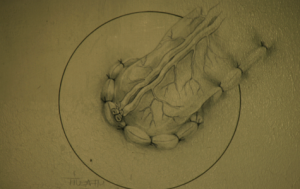Vasectomy Reversal Procedure
Before you have a vasectomy reversal, your doctor will need to examine you. This will determine whether or not surgery might benefit you, and which kind of surgery you will have. There are two types of vasectomy reversal surgeries: the more frequently performed vasovasostomy and the more complicated vasoepididymostomy. This physical exam will help your physician decide which operation is right for you.
Your physical examination will include palpation of your scrotum to determine the condition of your testicles. Your doctor will also check your epididymis (the tube on the back of each testicle where sperm is stored); if it is firm or engorged, a blockage may be indicated. You will be checked for varicoceles (varicose veins around the testicles) as well.
If your vas deferens (the tube that carries sperm from the epididymis to the urethra) is determined to have a long remnant, the chances for restoration of fertility are greater than if the remnant is short. A shorter vas might mean that there is a greater chance that a blockage exists, in which case a vasoepididymostomy might be indicated.
Vasovasostomy
The vasovasostomy is given with a local anesthesia in the doctor’s office. Incisions are made on each side of the scrotum. Each end of the cut vas, which is about the width of a strand of spaghetti, is located.
Vasectomy reversal – locations of the epididymis and vas deferens The doctor will check the testicular side of the vas for sperm. If sperm are found, the vas and epididymis are probably unobstructed.
Completed vasovasostomy The surgeon will then reattach the vas using a powerful microscope to magnify the ultra-fine sutures (stitches) that are used. The inner layer of the vas, about the size of a pin point, is reattached first, followed by the thicker outer layer. Both sides are completed.
Vasoepididymostomy
Vasoepididymostomy is recommended when there is an obstruction in the epididymal tube between the testis and the vas. This blockage may have been congenital (present at birth), caused by trauma, previous surgery, or infection. This operation is done in about a third of all vasectomy reversals.
Location of epididymis and vas deferens
Instead of connecting the cut end of the vas to the testicular cut end of the vas, the free end is attached instead to the epididymis.This allows the sperm to flow freely, bypassing the blockage.
Completed vasoepididymostomy:
Call us at (813) 875 8567 to schedule an appointment, with at our Tampa vasectomy reversal clinic.


